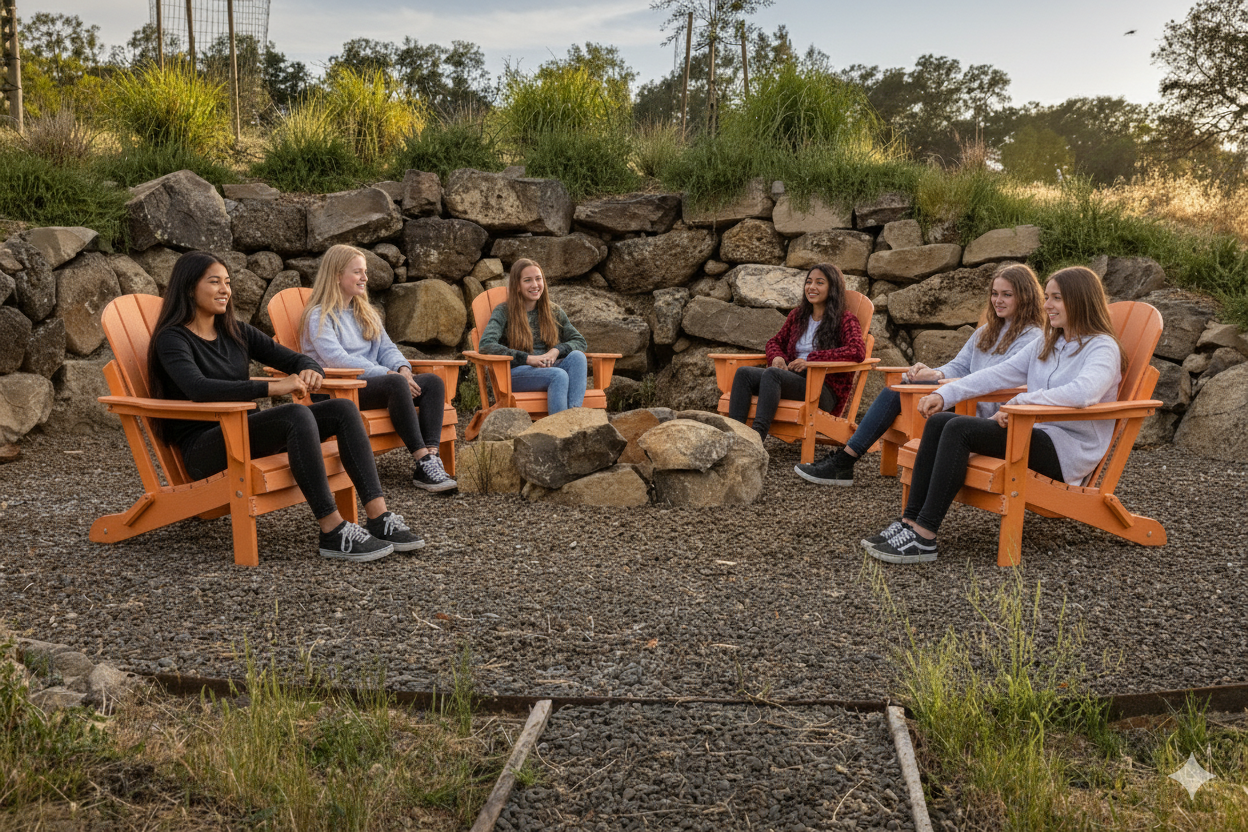For parents searching for teenage behavioral healthcare treatment, whether it be for mental health issues, substance use, or both (dual-diagnosis treatment), the options can be a bit overwhelming. At Muir Wood, we’ve helped countless families navigate the process. Here are answers to the most common questions about how to select teen residential treatment. Note that policies and protocols can vary greatly depending on the treatment center and its particular approach.
What Are Residential Treatment Facilities for Youth?
Residential treatment facilities for youth offer 24/7 specialized care for mental health and/or substance use. Unlike outpatient treatment, teens in residential treatment stay on campus throughout their treatment.
Even though having your teen away from home may be difficult, you can take comfort in knowing that the structured environment and professional therapeutic support of a residential setting will allow for a high level of care for your teen. Muir Wood’s residential treatment centers are staffed by experienced professionals who are deeply experienced in teen behavioral healthcare.
How Long Do Teens Typically Stay in a Residential Treatment Program?
Residential treatment centers typically offer 30-, 60-, or 90-day lengths of stay. The exact length of stay depends on the program and the individual needs and progress of each teen. Goals set at intake indicate treatment milestones and success metrics necessary for recommended discharge. The average length of stay at Muir Wood’s residential treatment programs is 45 days.
What Types of Therapies and Programs Are Available?
At a residential teen treatment facility, programming typically includes a variety of therapies and interventions designed to address behavioral health issues. They may offer a combination of:
- Psychiatric evaluation and testing
- Individual therapy
- Group therapy
- Family therapy
- Teen support groups
- Art and music therapy
- Medication assistance
- Young people’s 12-Step program introduction
Programs and individual practitioners may utilize different therapeutic approaches in their sessions, offering cognitive behavioral therapy (CBT), dialectical behavior therapy (DBT), or other forms of psychotherapy.
At Muir Wood, we take an integrated approach to treatment, combining therapeutic modalities with experiential therapies and overall wellness. We evaluate each teen upon admission in order to understand their unique needs and issues, then customize a treatment plan based on his or her struggles, diagnoses, and individual goals.
How Can I Be Sure a Treatment Center Is Qualified to Treat My Teen?
Finding a nationally accredited program with licensed practitioners utilizing evidence-based treatment modalities is a good place to start. The treatment center you choose should provide its accreditation status and a list of credentialed clinicians on its website.
States regulate residential treatment programs. In California, teen residential treatment centers must be licensed by the State of California Department of Health Care Services and certified by the Department of Social Services.
Beyond state requirements, independent accreditation from The Joint Commission is highly coveted and widely considered the gold standard in healthcare organizational certification.
Therapists should have credentials such as:
- Master of Social Work (MSW)
- Licensed Clinical Social Worker (LCSW)
- Licensed Marriage and Family Therapist (LMFT)
- Associate Clinical Social Worker (ACSW)
- Associate Marriage and Family Therapist (AMFT)
Other degrees, such as M.D., Ph.D., and Psy.D., may also qualify a professional to offer mental health services. For substance use treatment, look for specialized credentials such as a Licensed Chemical Dependency Counselor (LCDC)
Learn more by researching a facility’s website, speaking with the admissions staff, or reading testimonials and reviews.
What is a Typical Day Like at a Residential Treatment Center?
A residential treatment center schedule includes time for therapy sessions, meals, recreation or free time, and academic work. Therapy schedules accommodate individual therapy, group therapy, and family therapy. Each day also allows time for additional therapeutic experiences such as art and music therapy, yoga and meditation, and physical recreation. On Muir Wood’s campuses, teens also help with chores.
How Involved Should Families Be in the Treatment Process?
Family involvement in teen treatment is crucial. Learning how to navigate and repair conflict in interpersonal relationships is a key part of recovery for many teens, and much of this work happens when family members are present and engaged. It is important that the “family system” heals while the teen is away in treatment so that he or she returns to a functional home, and the cycle does not repeat itself.
Muir Wood involves families in treatment by way of virtual family therapy sessions. Additionally, communications from the treatment center, in the form of regular updates and/or meetings with therapists and care coordinators, help keep parents informed of their child’s progress.
What Kind of Peer Interaction Can My Teen Expect?
Peer relationships are an integral part of many residential treatment programs. They offer social interaction while allowing teens to develop social skills in a supportive community environment. Many programs also use group therapy as one of their treatment models, which facilitates healthy communication and allows for the sharing of experiences.
Muir Wood has developed its treatment programs with peer support in mind. Teens are admitted into programs with other teens in their age range, gender assigned at birth, and diagnosis.
How Do Residential Treatment Centers Prepare Teens to Return Home?
Teens return home from a residential program when they are deemed to no longer require 24/7 care and support. However, most will still need ongoing support and a residential treatment program should help those individuals create a continuity of care transition plan.
These plans may include ongoing therapy at an outpatient program, connection to peer support groups, and strategies to maintain progress and sobriety.
How Do Treatment Centers Measure Progress and Success?
Treatment centers that measure progress and success typically use independent research facilities that conduct primary research involving client and family feedback.
Muir Wood uses a leading research organization to measure treatment outcomes. Muir Wood also gathers extensive feedback from families on a regular basis.
What Costs Are Involved with Residential Treatment?
Muir Wood believes that the cost of treatment should never exacerbate a family’s crisis. In order to make its exceptional brand of treatment accessible to most families, Muir Wood is an in-network provider for many insurance companies, including Aetna, Anthem, Blue Shield, Cigna, Halcyon, Health Net Federal Services, Kaiser Permanente, Magellan, MHN, Optum, and TRICARE. We also can work with out-of-network insurance providers on a case-by-case basis.
Muir Wood Residential Treatment for Teens
Muir Wood offers comprehensive treatment for teens at our 17 residential campuses in California. Learn more about our treatment options or fill out an assessment form for your teen today. Call our team at 866-705-0828 with any questions.









